Meta Quest 3 vs. Quest 2: Every key upgrade to tempt VR fans
The latest Quest steps up for graphics, visuals, and MR, but it treads water for comfort and battery life.
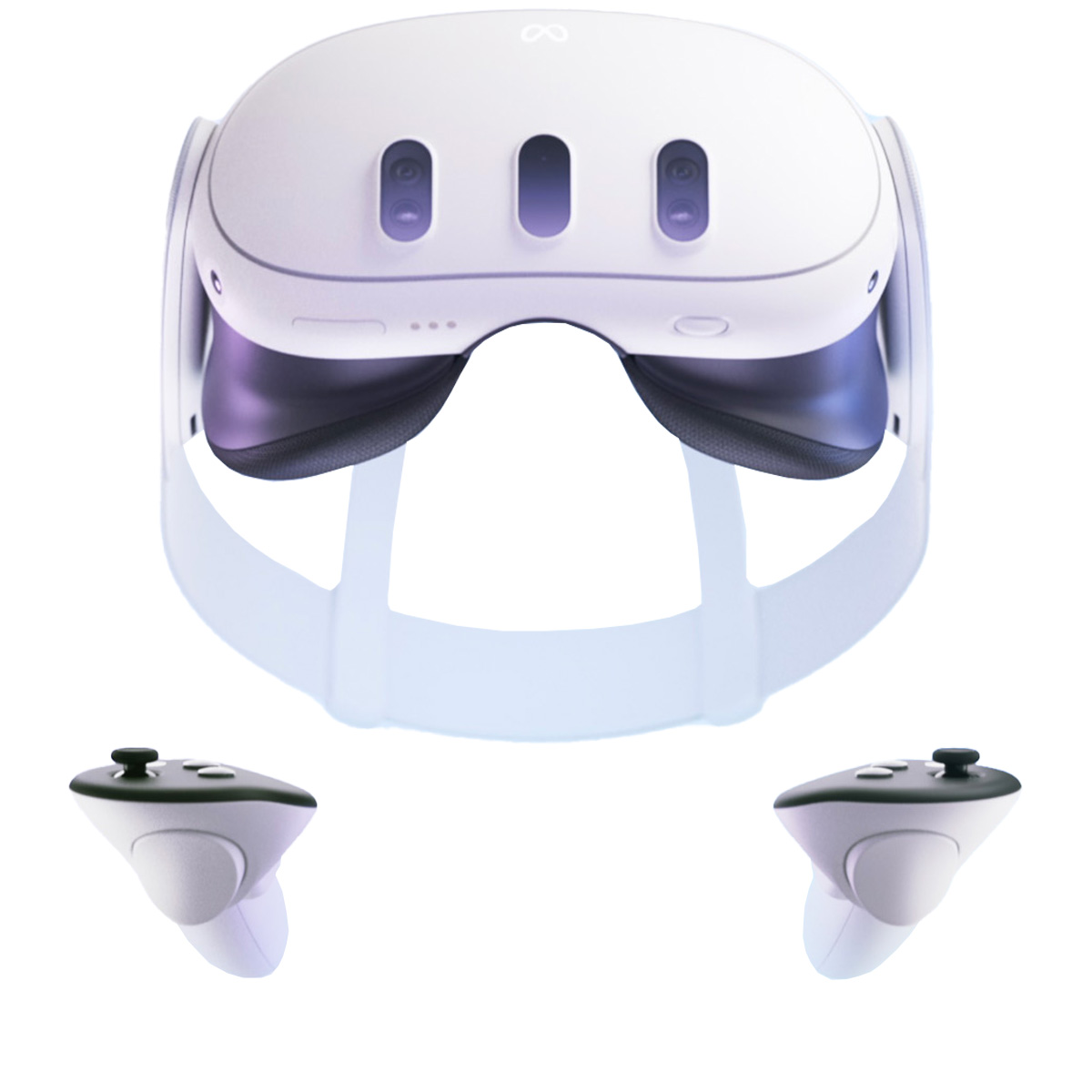
VR + MR = fun
The Meta Quest 3 delivers double the processing power, a 30% narrower frame, much sharper lenses with a higher-res display, and full-color passthrough to your living room. With Quest 3 enhancements and exclusives starting to pour in, it's a strong option for Quest 2 owners who want more of an upgrade than the Quest 3S can deliver.
Pros
- 40% smaller than Quest 2
- Double the processing power
- 30% better resolution
- Ring-less controllers with improved haptics
- Full-color mixed reality
- Proper IPD adjustment wheel
Cons
- Higher price
- Still uses a cloth head strap
- Still the same weight as the Quest 2
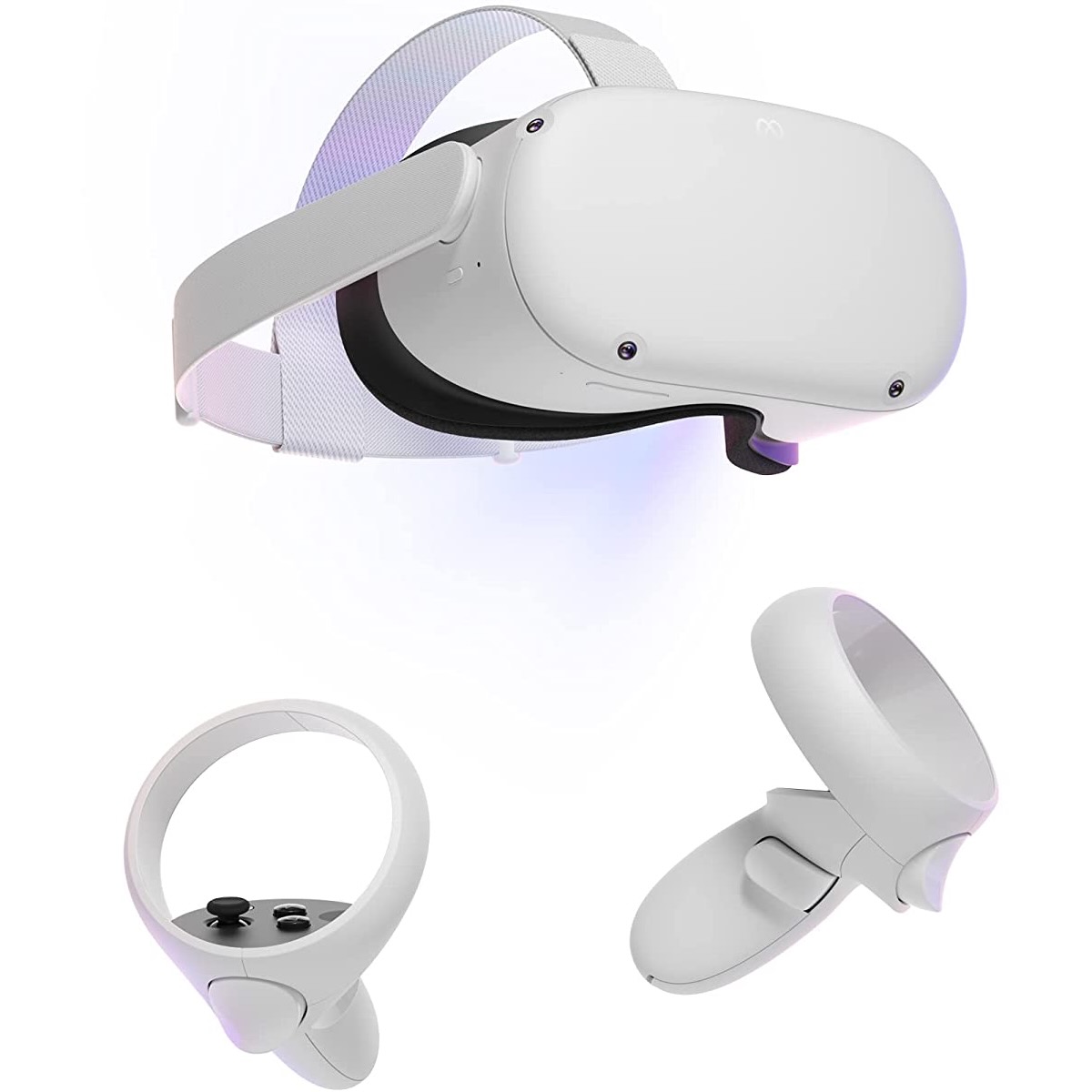
The popular VR classic
The Meta Quest 2 is no longer available from Meta directly, though you may find it from third-party sellers. The Quest 3 handily beats the Quest 2 for hardware, but from a strict design perspective, they're not actually that different, and they support most of the same hundreds of Quest titles.
Pros
- Still the most affordable VR headset
- An amazing library of games
- Great room-scale tracking tech
- Lots of 3rd party accessories
- Still gets software updates & new games
Cons
- Controllers have deadzones
- Front-heavy cloth strap
- Bulkier
- Passthrough is low-res and black & white only
- Lower-fidelity graphics
It's been three years since we first got our hands on the Oculus Quest 2, the best-selling VR headset of all time. The Meta Quest 3 is the successor to its legacy, with the same game library, general design choices, and compromises, but with significant upgrades in key areas.
What makes Meta's new headset so tempting? It's not just one upgrade like better controller tracking, double the graphical power, or the explosion of full-color passthrough. No, it's the combination of these factors that's so impressive.
So, comparing the Quest 3 vs. Quest 2, the new headset wins, unsurprisingly. But does it do enough to make you swap out your Quest 2, or can you make do with your current device? Our Meta Quest 3 review will give you an in-depth look at the headset, and we have several members on staff who have tested both the Quest 3 and Quest 2 to help you decide!
Quest 3 vs. Quest 2: Design and comfort
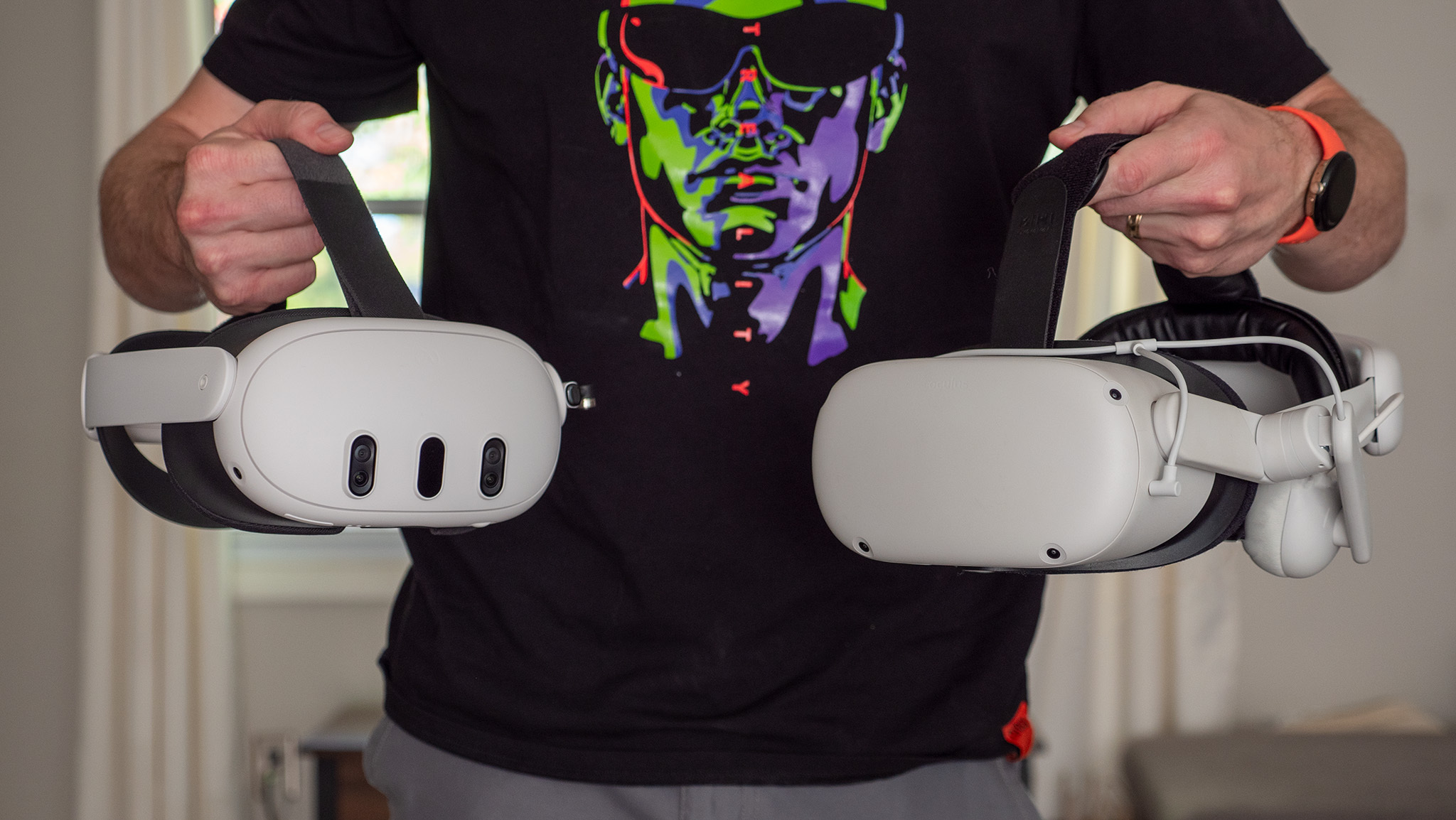
| Design Specs | Oculus Quest 2 | Meta Quest 3 |
|---|---|---|
| Materials | Plastic headset; foam interface; cloth strap | Plastic headset; silicone interface; cloth strap |
| Lenses | Fresnel | Pancake |
| Dimensions | 191.5 x 142.5 x 102mm | 184 x 160 x 98mm |
| Weight | 503g; 17.74oz | 515g; 18.17oz |
| Field of view | 96º horizontal; 90º vertical | 110º horizontal; 96º vertical |
| IPD | 56–70mm; 3 fixed settings | 53–75mm; 13 fixed settings |
There's no doubt that both the Quest 2 and Quest 3 share some design DNA. They are both blindingly white, ship with cloth head straps, and feature side rails with built-in speakers. Both headsets also pack all of the computing hardware and the battery into a face-mounted display.
Take a closer look, though, and you'll see several huge changes. First up is the size. Meta was able to bring over the pancake lenses from the Quest Pro — called "pancake" because they're flat compared to older, thicker VR lenses — which means it doesn't need as much space to fit big, bulky old lenses in a headset frame, as it did with the Quest 2.
That makes the Quest 3 40% narrower than the Quest 2, looking specifically at the heavy plastic portion. The new Quest 3 face gasket makes up the difference, leaving enough space for you to wear your glasses in-headset without a spacer. But generally speaking, it's significantly more balanced, even if it's slightly heavier than the Quest 2.
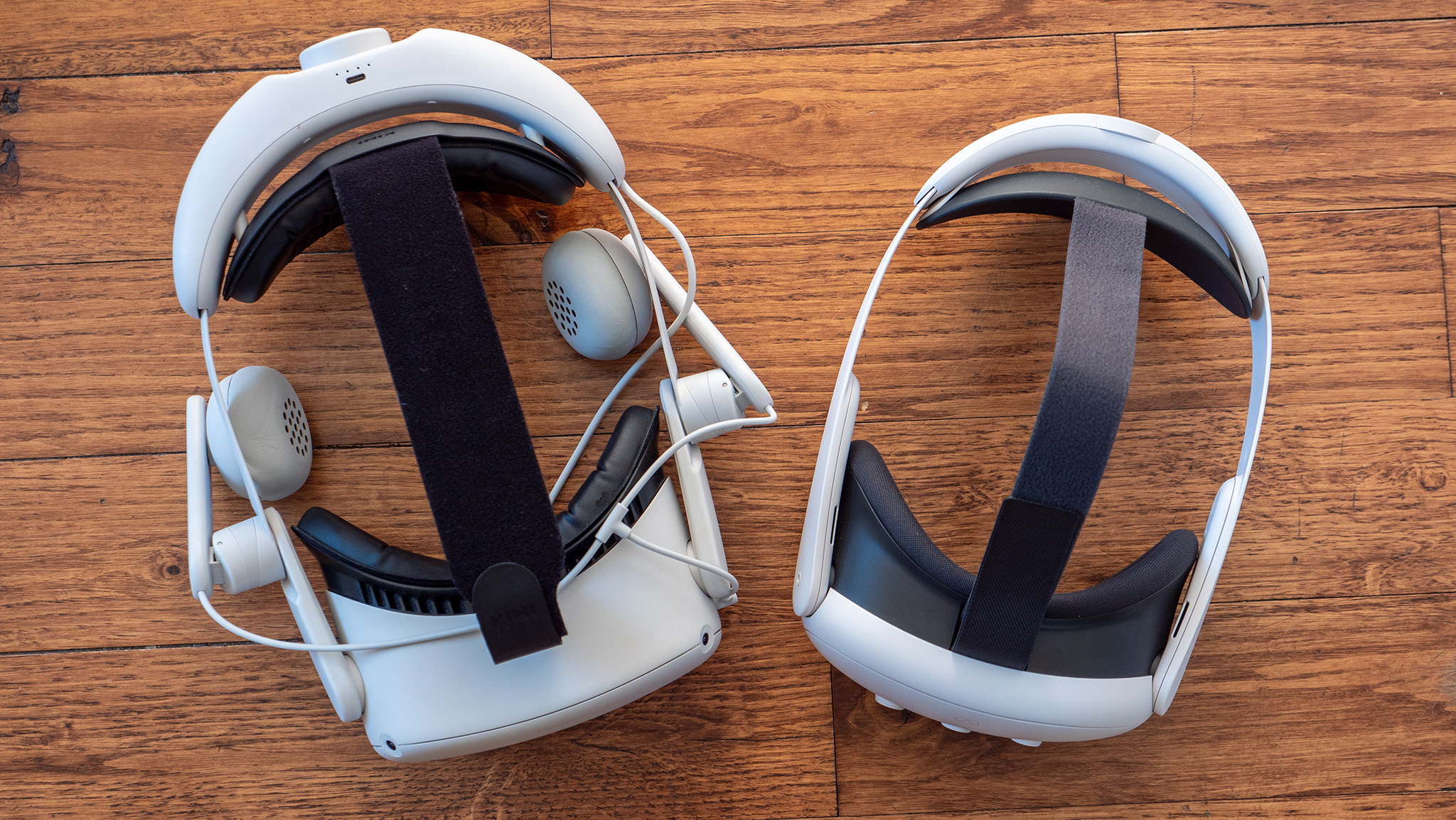
Those new lenses enable a 15% wider field of view than the Quest 2, roughly the same as the Quest Pro. It's a subtle difference, but one that means you'll deal with less VR tunnel vision.
Get the latest news from Android Central, your trusted companion in the world of Android
The new lenses are crystal clear and don't have the tiny "sweet spot" the Quest 2's lenses have.
Equally important, these new pancake lenses are crystal clear, without fresnel lenses' well-known (and annoying) "sweet spot." Meta claims its pancake lenses have 25% better "sharpness" with "significantly fewer stray or scattered light artifacts" than your Quest 2 fresnel lenses, and we're pretty satisfied with the claim thus far. You can see things clearly without much adjustment in most cases, whereas the Quest 2 required more shifting horizontally and vertically to avoid blur.
Plus, Meta went back to analog IPD adjustment, as it had with the original Oculus Quest and Rift. That means no matter the distance between your eyes, you can fine-tune the spacing with the handy IPD wheel right on the bottom, with 1mm intervals between settings. Compare that to the Quest 2, which had you pull the lenses apart at 5mm intervals; it left plenty of people struggling to find that sweet spot.
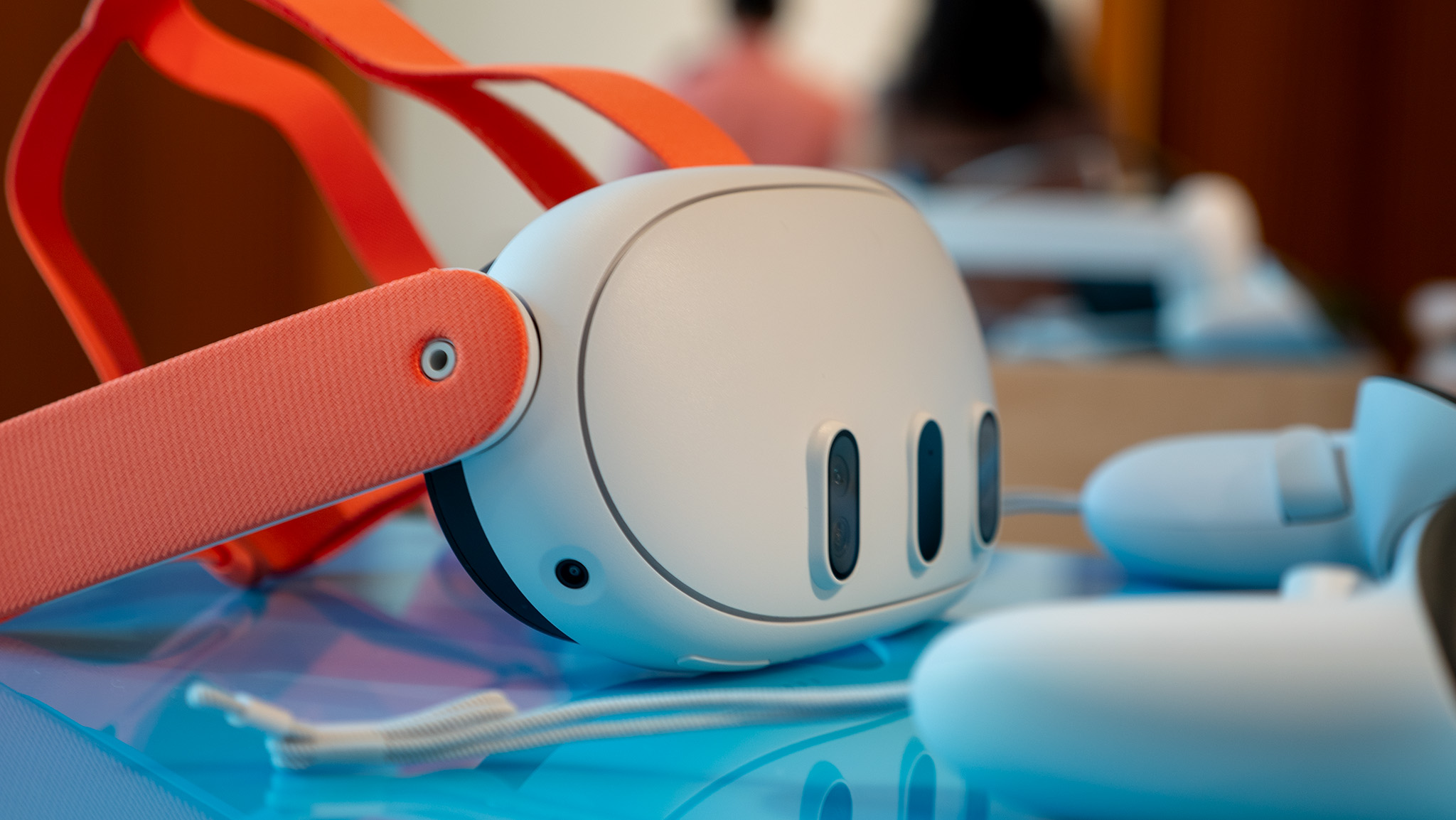
For all of these improvements, the fact remains that this is an all-in-one headset that's fairly heavy and comes with a cloth strap instead of an Elite Strap design.
Meta improved the cloth strap so that it has better weight balance on either side of your head, but we've also noticed that the new design tends to press down onto your ears while also leaving pressure on your face.
At the same time, our Quest 3 reviewer noted that despite the redesigned facial interface, he "regularly had the Quest 3's lenses fog up on him" during gameplay sessions, and finds it "incredibly frustrating" that Meta hasn't solved this issue when a lot of third-party Quest 2 face covers are fog-free thanks to better venting.
It's clear that Meta once again left the onus on consumers to upgrade their comfort level, which means spending $80 to $130 on a better strap. Generally speaking, Meta's official accessories are very expensive.
Another issue is that the redesigned Quest 3 won't work with most Quest 2 accessories besides your Link cable and headphones. Your old Elite Straps, facial interfaces, controller straps, and other modifications most likely won't work, which means you'll have to spend a healthy amount of money on top of the higher headset price.
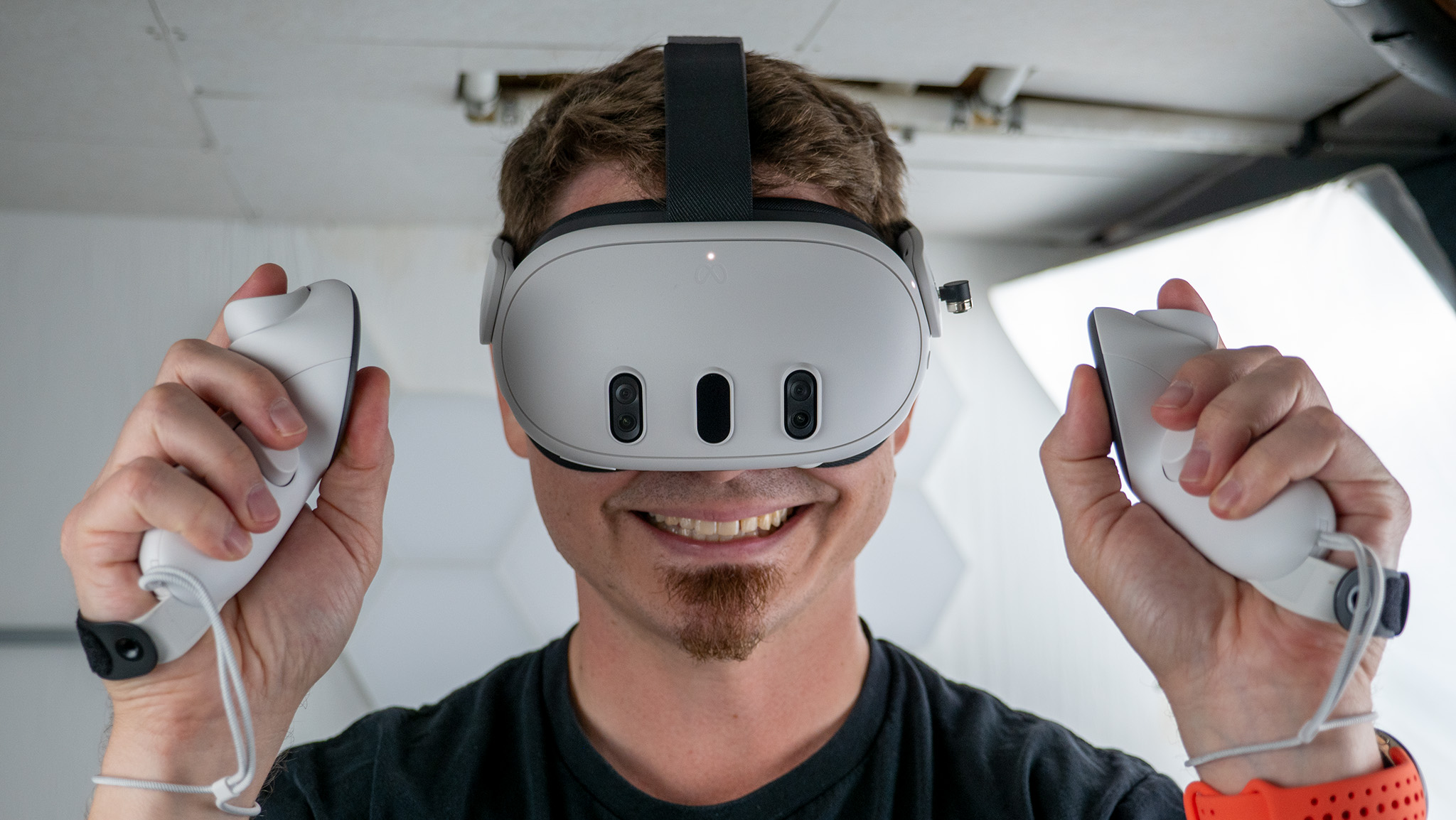
The front of the Quest 3 looks quite different from the Quest 2, now prominently displaying the cameras to everyone around you. It emphasizes how the Quest 3 has gone all-in on full-color passthrough for a more comfortable experience.
Quest 3 has more, higher-resolution cameras, an IR projector, a depth sensor, and the ability to automatically map your room.
Around the Quest 3, you'll find a whopping six cameras instead of the four cameras on the Quest 2. Four are located in the left and rightmost "pills" on the front, while two additional ones are located on the underside. That's important for accurate tracking of controllers and hands and providing a clear view of the room around you while wearing the headset.
Those cameras are 10X the resolution of the Quest 2's cameras and 3X the Quest Pro's resolution. Plus, they provide full-color footage instead of the crummy black-and-white passthrough from the Quest 2.
In practice, we've found that the Quest 3 passthrough is clear enough to read small text on your phone, though you should expect a bit of blur still.
The middle "pill" contains a new IR projector and depth sensor which are crucial for better mixed reality content. We'll cover that in more detail in the section below but know that this enables Meta to automatically map rooms or areas and more accurately track arms and controllers.
Quest 3 vs. Quest 2: Graphics, performance, and battery life
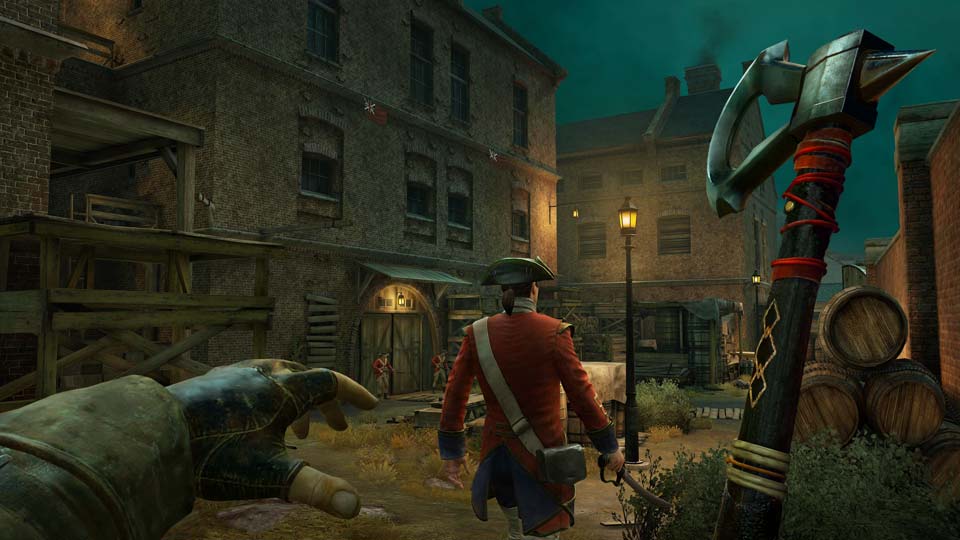
| Specifications | Meta Quest 3 | Oculus Quest 2 |
|---|---|---|
| Chipset | Snapdragon XR2 Gen 2 | Snapdragon XR2 Gen 1 |
| RAM | 8GB | 6GB |
| Storage | 128GB ($499); 512GB ($649) | 128GB ($299); 256GB ($349) |
| Display | LCD | LCD |
| Resolution | 2064 x 2208 pixels per eye; 1,218 pixels per inch; 25 pixels per degree | 1,920 by 1,832 pixels per eye; 773 pixels per inch; 21 pixels per degree |
| Average battery life | 2.2 hours | 2.5 hours |
| Charge time | 2 hours | 2 hours |
Both the Quest 2 and Quest 3 are powered by Qualcomm's dedicated line of Snapdragon XR2 chips for virtual reality. They're designed to simultaneously power the gaming performance, dual displays, and multiple cameras without overheating.
The Oculus Quest 2 used the Snapdragon XR2 Gen 1, a redesigned version of the Snapdragon 865 chip from 2020; the Gen 2 model is most likely based on 2023's Snapdragon 8 Gen 2.
You can imagine how much more power you get by jumping three generations of new mobile hardware, to a redesigned version of the chip found in the best Android phones. At the same time, however, the Quest 3 has stronger performance, higher-resolution displays, more tracking cameras, and two full-color passthrough cameras; so it doesn't hit Qualcomm's promised 2.5X performance boost.
Instead, specific to the Meta Quest 3 vs. Quest 2 performance, Meta itself claims that the new chip and 33% extra RAM gives you 2X graphical performance and much faster loading times. It's still a significant boost, one that helps developers offer higher refresh rates and more textures with less visual "fog."
The chipset that powers the Quest 3 gives 2X the GPU performance of the Quest 2.
In our guide on games with Quest 3 enhancements, you can see how popular titles like Red Matter 2 and Walking Dead: Saints & Sinners 2 offer major boosts in resolution, textures, realistic shadows, and the number of enemies you can see on screen at once, along with less visual fog to compensate for the Quest 2's limited power.
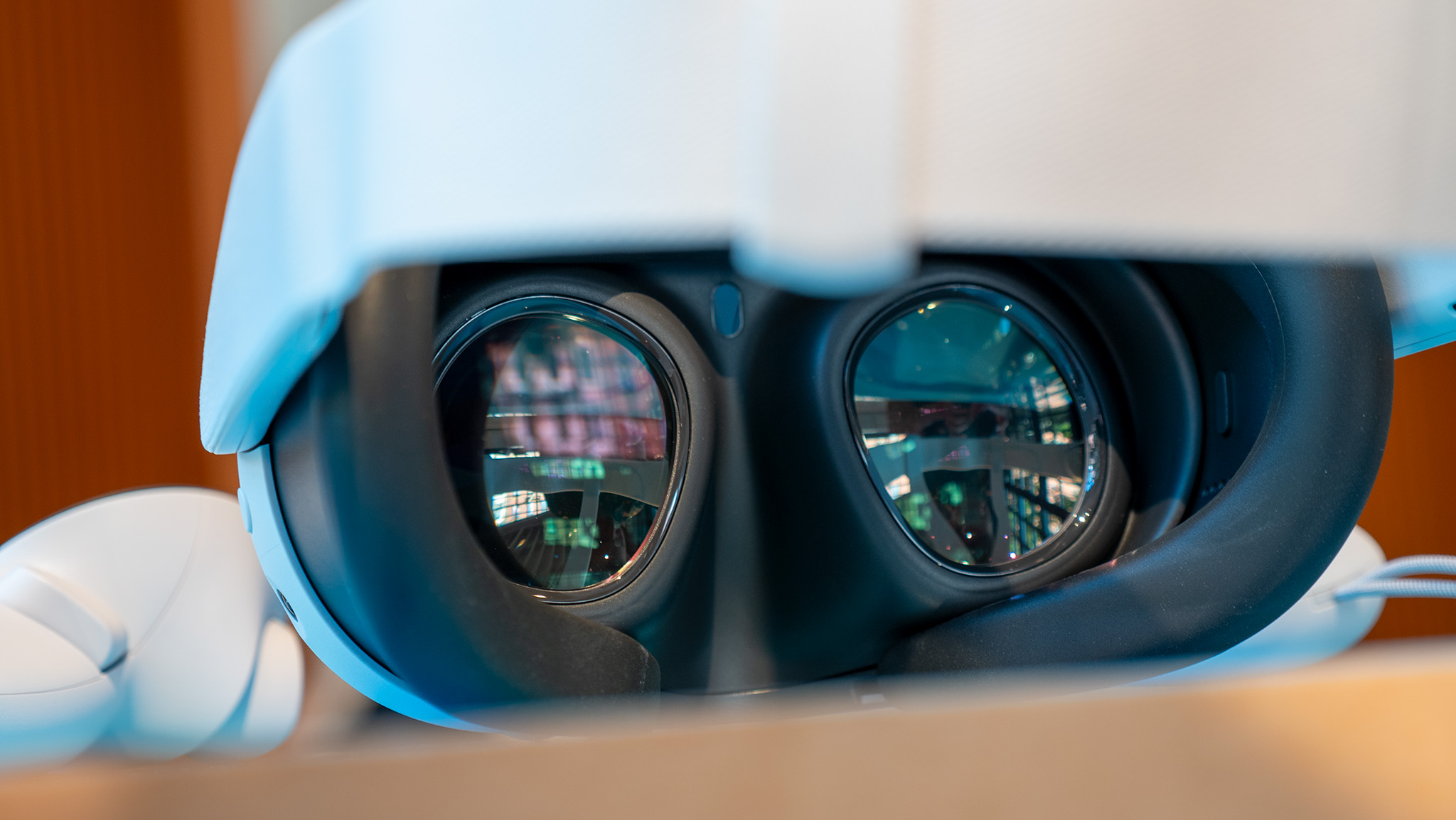
You also benefit from the Quest 3's enhanced display resolution: it's 30% more pixel rich than the Quest 2, with 445 more pixels per inch and (as mentioned before) 15% wider FoV. The display type is unchanged — LCD, which doesn't deliver the rich colors and deep blacks of an OLED — but you'll still notice an immediate difference that's only enhanced by the XR2 Gen 2.
The only downside to all of these improvements is that the Meta Quest 3 is just as short-lived as the Quest 2, despite Qualcomm claiming that the XR2 Gen 2 runs 50% more efficiently. Meta claimed that the Quest 3 has a 2.2-hour average per session, but we regularly find that it runs out of juice at 2 hours, if not sooner.
The Quest 2 varies from 2 to 3 hours as well — though headsets that are several years old will have lost some capacity naturally over time. The main point here is that both headsets benefit from a battery pack built into an Elite Strap, which means spending more money on top of the headset cost.

Generally speaking, the Quest 2 and 3 share the exact same library. Developers can patch the Quest 3 version with the upgrades mentioned above, but not all of them do.
In the year since the Quest 3 launched, we haven't seen that many exclusives, but the number is growing. Most Quest 3 exclusives are mixed-reality titles like Laser Dance that need full-color passthrough, but there are some AAA titles like Batman: Arkham Shadow and Alien: Rogue Incursion that need the Snapdragon XR2 Gen 2 power to run properly. Quest 2 owners won't get to play them.
Still, if massive games like Assassin's Creed VR and Asgard's Wrath 2 can fit on the Quest 2 — even if they look better on Quest 3 — then it's clear that the Quest 2 has some power left.
Quest 3 vs. Quest 2: Controllers and hand tracking
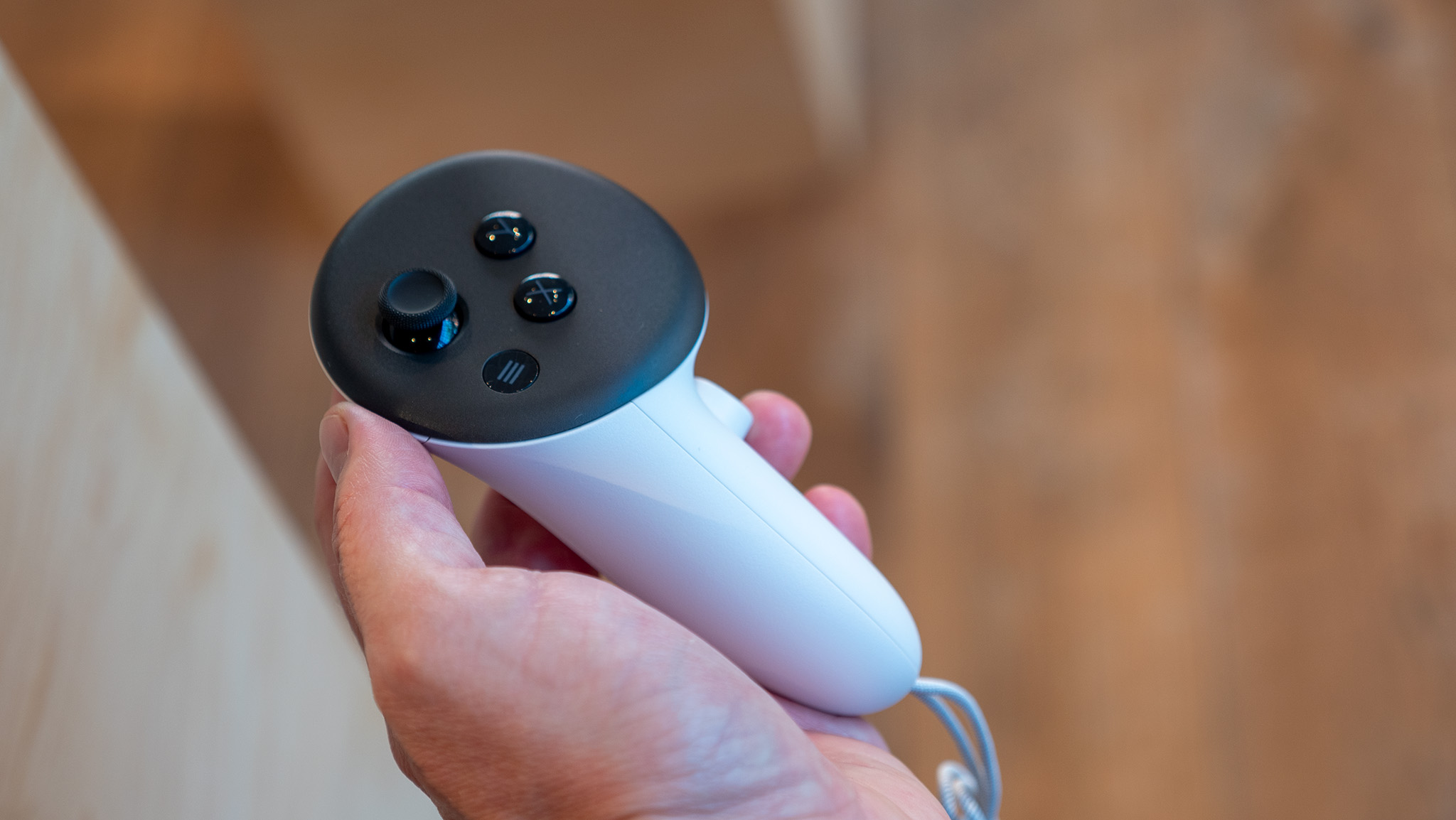
| Specs | Quest 3 Touch Plus | Quest 2 Touch |
|---|---|---|
| Dimensions | 126 x 67 x 43mm | 120 x 90mm |
| Weight | 126g | 126g |
| Battery life | Weeks to months | Weeks to months |
The Quest 3's controllers are the most radical change yet in a mainline Quest headset. These controllers look a lot like the Quest Pro Touch Pro controllers and are called Touch Plus. Comparatively, the Quest 2's controllers are just called Touch controllers.
As you might guess, that means we're looking at varying levels of tracking sensitivity between these models. Quest 2 Touch controllers represent the lower end, while Quest 3 Touch Plus fall in the middle and Touch Pro controllers give you the best tracking, thanks to their built-in Snapdragon chips.
Quest 3 can use Touch Plus or Touch Pro controllers, so you can always get the best experience — if you're willing to spend a whopping $300 on the Pro controllers.
The Quest 3's Touch Plus controllers are slightly better than the Quest 2's but not as good as the Quest Pro's.
The Quest 3's controllers drop the LED ring that surrounds the Quest 2 controllers and puts LEDs all around the controller body itself, instead. The six cameras on the Quest 3's headset can then track those Touch Plus LEDs in a similar way to how the Quest 2 tracks the Touch controllers.
Quest 3 Touch Plus controllers will feel less bulky and won't have a ring to smash into each other if you get them too close. If you've ever done this with Quest 2 Touch controllers while playing Beat Saber, you'll know how bad it can feel. Plus, they have improved "TruTouch" haptics that feel great while gaming.
In terms of battery life, you're still relying on AA batteries. Meta told us that "you can expect the battery life of the Quest 3 controllers to be about as long as Quest 2 controllers." In other words, if you're an active gamer, they'll last you across weeks of sessions; if you're less active, they can last you months if you choose the right batteries with minimal idle drain.
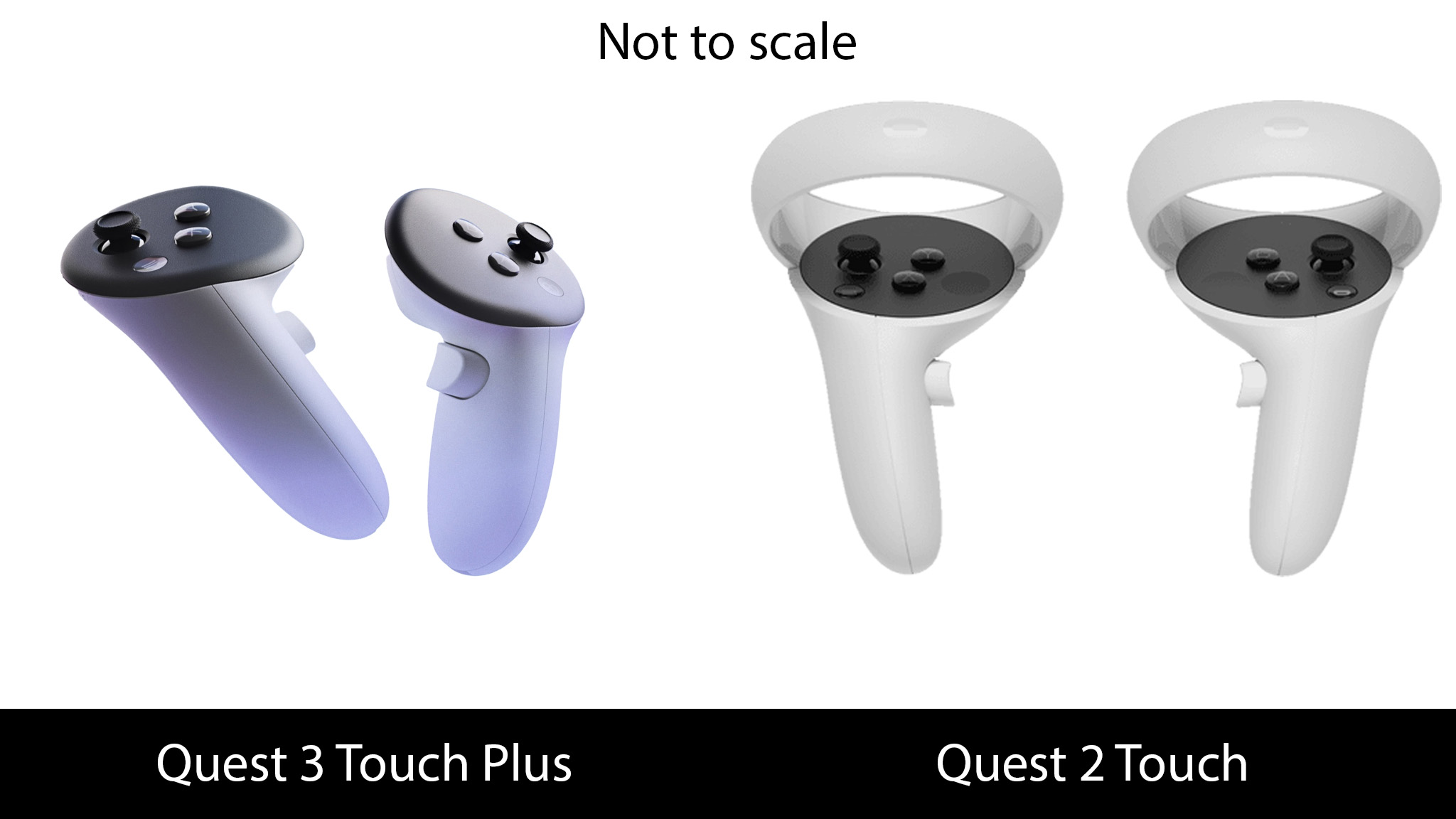
Besides the increase in the number of tracking cameras, the Quest 3 also has a depth sensor and an IR projector. If you've ever used an iPhone and have played around with Animoji, you'll know how accurate the combination of IR projector and depth sensor can be.
Recent games like Rogue Ascent have proven that hand-tracked games can actually be fun and, given the increase in fidelity we're sure to see with the Quest 3, hand-tracking will be better than ever all across the Quest experience.
Equally important, the Snapdragon XR2 Gen 2 has an 8X AI performance boost. Meta told us it has leveraged to reduce controller tracking "dead zones" via computer vision and AI, making the old tracking rings less necessary.
Our reviewer found that when he purposefully tried to fool the Quest 3 by holding the controllers behind his back, it still did a good job of estimating their location. Generally speaking, he says that "the tracking is perfect and worked exactly as I had hoped," and that "Quest 3 controllers track better than Quest 2 controllers ever hoped to."
Quest 3 vs. Quest 2: Mixed reality
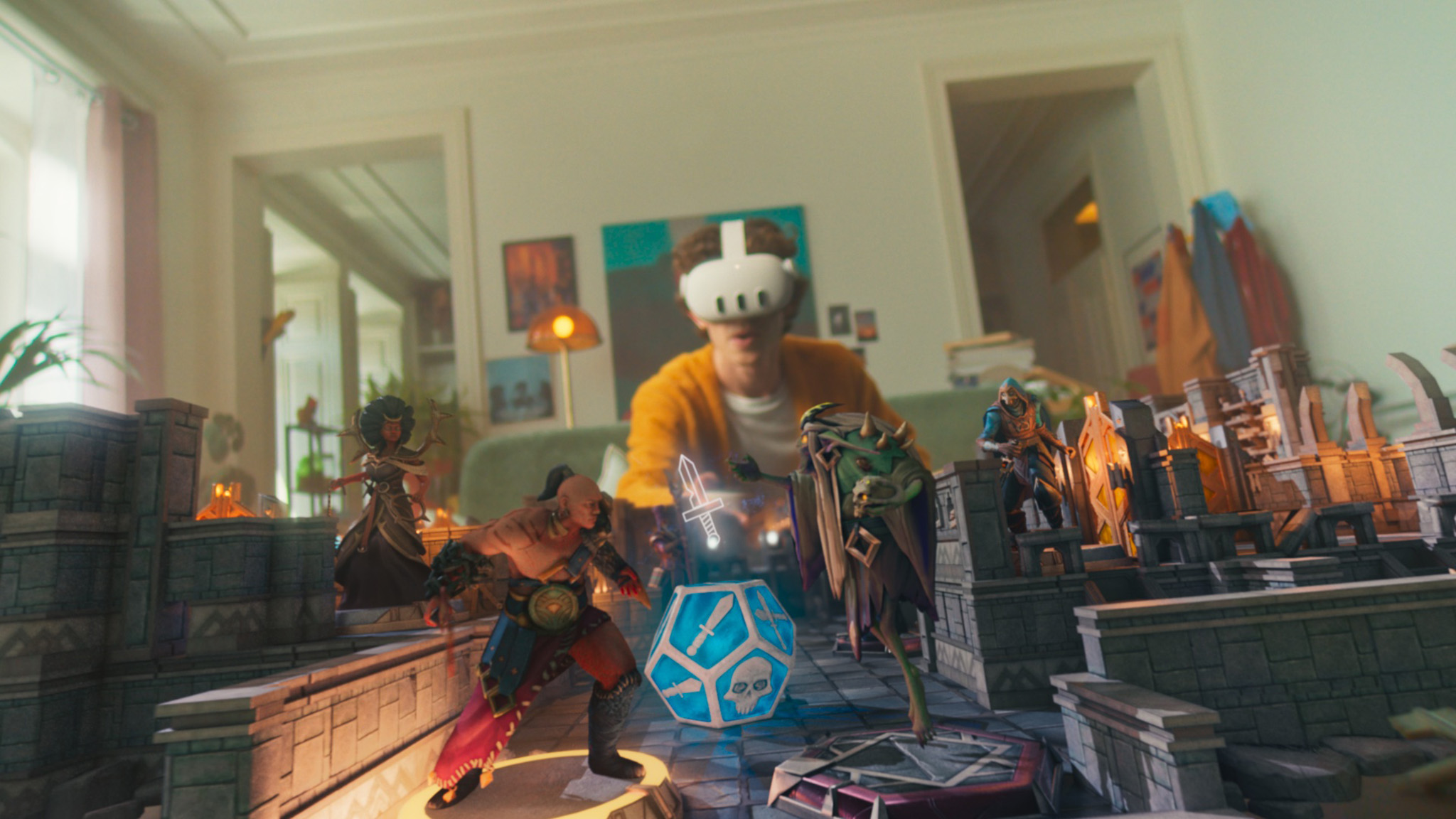
Mixed reality is the defining feature of the Quest 3. As such, Meta has significantly upgraded the cameras and processing abilities of the Quest 3 to deliver a better mixed-reality experience. The Quest 3's cameras are 10x the resolution of the Quest 2 and deliver full color with wide dynamic range.
The Quest 3's passthrough video looks to deliver an actual clear view of the room you're in, unlike the Quest 2 or Quest Pro.
This means that when you're using the Quest 3, you can clearly see the room you're in so that you can still interact with the real world while playing in the virtual one. That means you can easily drink a cup of coffee, have a conversation with someone in the room, bounce a virtual ball around your physical walls, or even duel your friends in the same room with virtual swords.
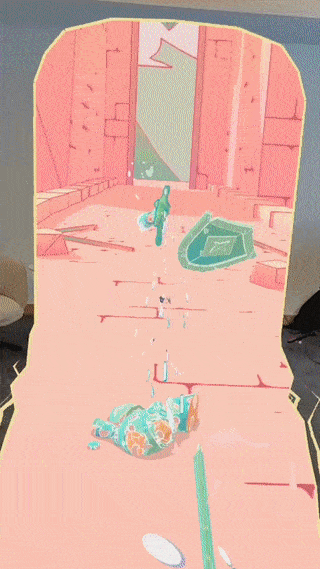
By comparison, the Quest 2 only delivers low-resolution, black & white-only video. Quest Pro was the first Quest headset that offered full-color "passthrough video" — which means the headset uses the cameras to show you the room around you without having to take the headset off — but the Quest Pro's video quality left a lot to be desired.
One of the biggest problems with the Quest Pro's video quality was the dynamic range, which means it was unable to give you a visible image of anything bright. Windows were completely blown out and phone and TV screens were almost completely unreadable.
The Quest 3 fixes this by offering up better cameras that present a more phone-like camera quality to them, meaning those bright areas are clearly visible without making dark areas of the room too dark to see.
Plus, one key quality-of-life improvement is that the Quest 3 resolution is strong enough to let you read a phone screen without taking off your headset. That means you can quickly check on why your phone buzzed in your pocket without needing to take the headset off, something that gets old after a while.
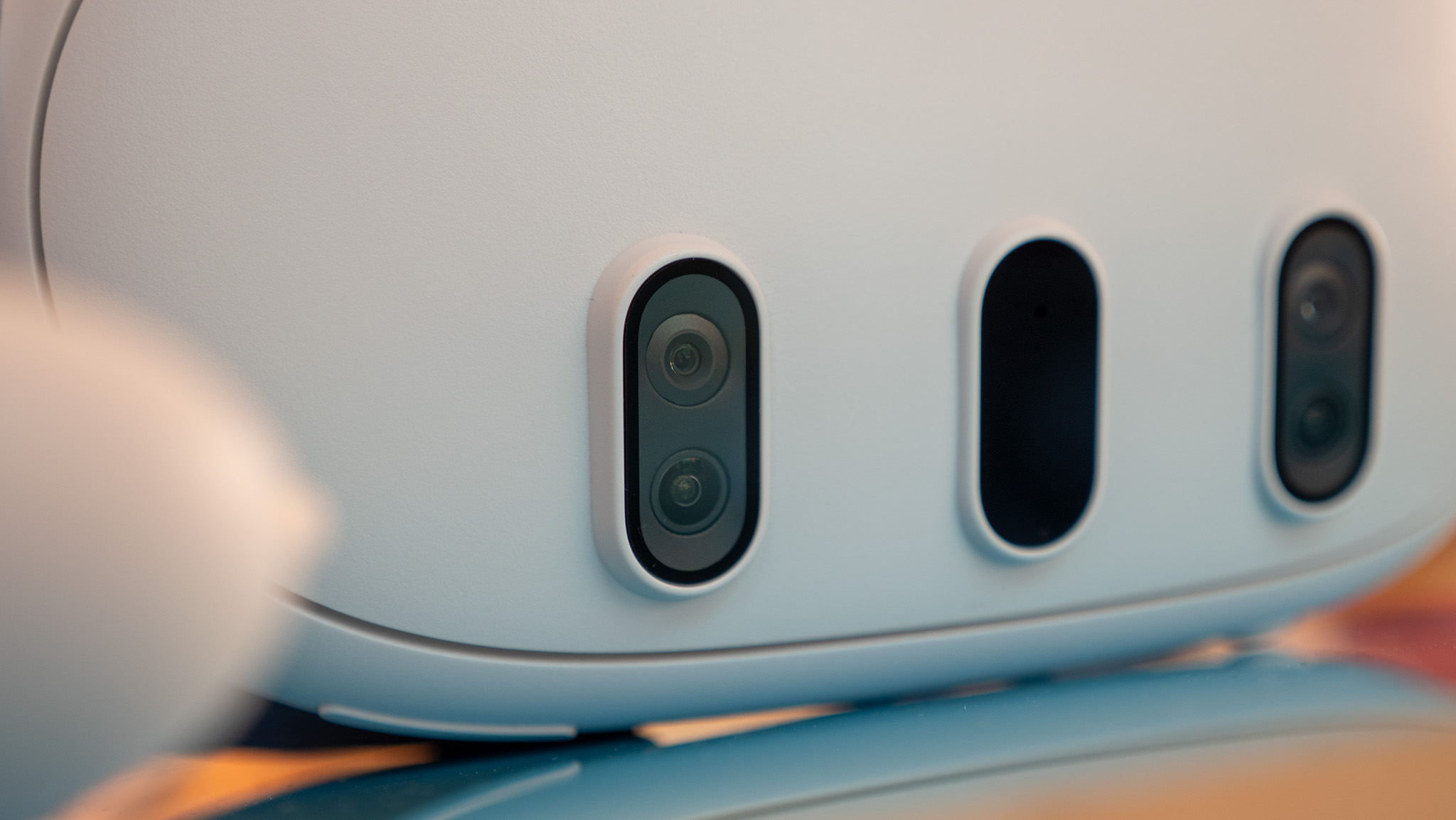
Additionally, Meta is upgrading its Meta Reality toolkit to take full advantage of the Quest 3's hardware. Meta Reality is a collection of tools that helps the Quest understand what a wall is and how it's different from a floor or a ceiling. Plus, it lets the headset know when a piece of furniture, a person, or a pet gets in your play space.
Oculus Guardian is getting a big upgrade and can auto-map your room.
The Oculus Guardian system also received an upgrade on the Quest 3 and can now utilize the new depth sensor and IR projector to automatically scan and map the room around you. You still need to occasionally rescan the room if objects are detected, something we noted during some Quest 3 demos at Meta Connect, but it's much quicker than it used to be.
Having an IR projector on board also means the Quest 3 can play and track accurately in any lighting conditions, even when it's pitch black in a room. That's because the headset will project its own light that's invisible to the human eye.
Given how Apple has pushed mixed reality with its Vision Pro headset, we expect to continue to see improvements and new things taking shape with the Quest 3.
Quest 3 vs. Quest 2: Which Quest is best?

When it comes to technology, newer is almost always better. There's just no getting around it. The Meta Quest 3 is better than the Quest 2 in most key ways, and that gap will only widen as we see more mixed reality experiences and features added to the Quest 3 over time.
The Quest 3 is smaller, slightly more comfortable, has better controllers, better hand tracking, can automatically map a room, see in the dark, is as least twice as fast for gaming performance, and has slimmer, clearer lenses than the Quest 2. While the Quest 3 doesn't have exclusives yet, Meta already confirmed the obvious: it'll happen eventually.
Are these changes enough to justify spending an extra $499 on a new headset, when the Quest 2 can play (lesser versions of) the same game library? It really depends on whether or not you can make do without full-color mixed reality or the graphical enhancements coming to your favorite games.
You may, of course, want to look into the Quest 3S instead, Meta's 2024 budget headset that closely resembles the Quest 2 but has the Quest 3's power. You can check out our guide on the Quest 3S vs. Quest 3 if you're weighing a budget upgrade instead.

VR + MR = fun
The Meta Quest 3 is the most advanced standalone VR gaming console ever produced. It's faster, smaller, has more accurate tracking, and can deliver better VR and mixed reality experiences than ever before.

The popular VR classic
The Meta Quest 2 has been supplanted by the Quest 3S and Quest 3, but that doesn't change the fact that it sold 20 million units and will probably receive new VR titles for years to come.

- Michael L HicksSenior Editor, Wearables & AR/VR
You must confirm your public display name before commenting
Please logout and then login again, you will then be prompted to enter your display name.
